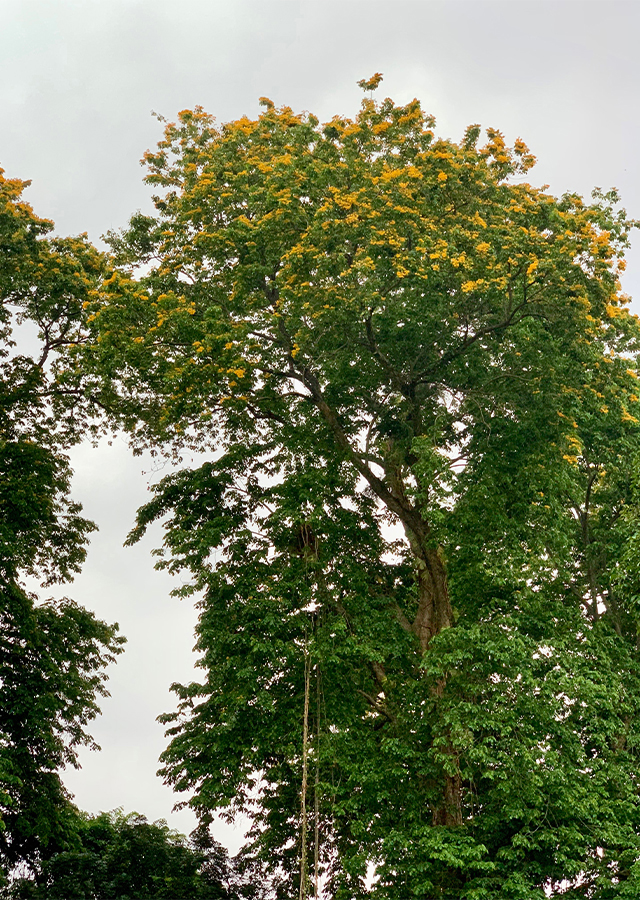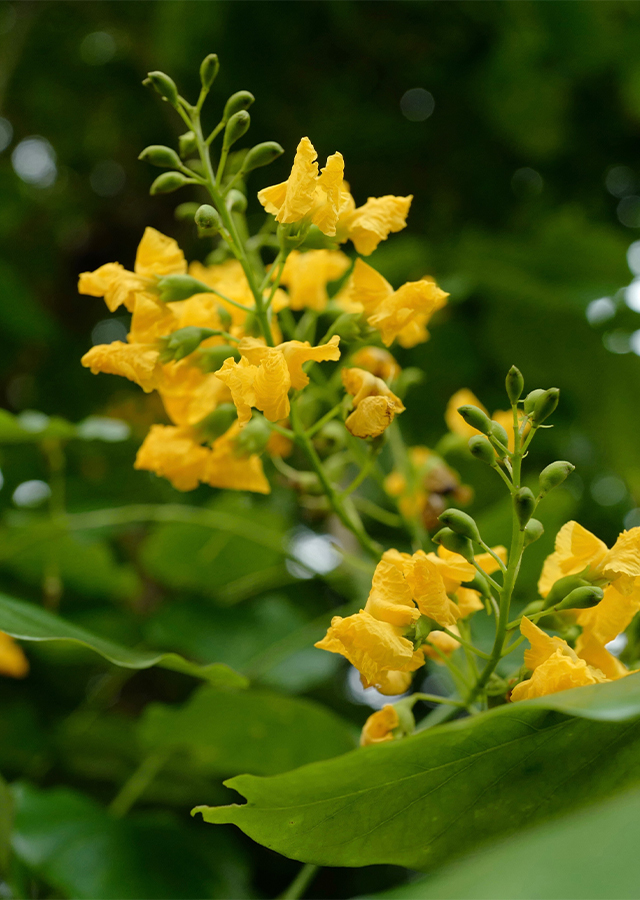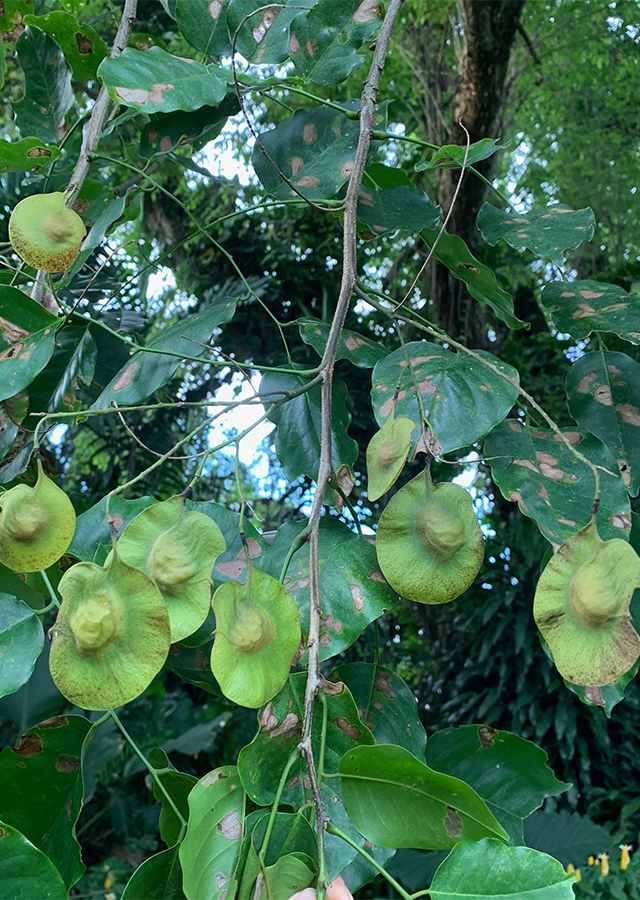Traditional Herbs from Pterocarpus indicus
diarrhea_and_thrush
- Take 250 g (1 piece) of sengana bark and 2 glasses of water.
- Boil the bark until 1 glass of water remains.
- Drink 1 time a day, 1 glass each day until cured.
boils
- Squeeze enough Angsana leaves and apply them to the part of the body affected by boils.
- Wait until the concoction dries up the boil dries up and slowly deflates.
What is Pterocarpus indicus Looks like??



Parts of Pterocarpus indicus that could be used
- Leaves
- Bark
- Roots
Pterocarpus indicus Distribution
Its distribution is in Southeast Asia to the Pacific Ocean, found from the southern part of Burma to the eastern Solomons, including Sumatra, West Java, Kalimantan, the Philippines, Java, Maluku and Papua New Guinea. It has benefits as a shade plant, ornamental plant, furniture material and medicinal plant.Agroecology of Pterocarpus indicus
Found in lowland primary and secondary forests, coastal forests, coral sand. Grows well on various types of soil from fertile to rocky at a pH of 5.5-6.5, ideal in tropical areas at an altitude of 0-750 m above sea level, at a temperature of 24-32 °C, rainfall of 2,000-3,000 mm/year.
Morphology of Pterocarpus indicus
- The roots are known as plank roots (butter roots), the roots protrude and jut out.
- Stems are cylindrical, gray-brown bark, fine scales, reddish gum.
- Compound leaves, 5-13 leaflets, alternate at the leaf axis, ovate to slightly oblong, round base and pointed tip, bright green, glabrous, and thin.
- Fragrant, compound flowers\u201a panicles, bright yellow to yellow-orange, bell petals, leaf corolla 16-18 mm long.
- Flat pods, ripen in 4-6 months, brownish (dry), diameter 1.5\u20133 cm, thickness 6\ u20139 mm.
Cultivation of Pterocarpus indicus
�
Pterocarpus indicus, more details :
Chemical Content of Pterocarpus indicusLeaves: loliolide, paniculata diol, polypeptide acid. Flowers: lupeol and phytol ester. Stems: formononetin, iso liquiritigenin, hydroxy hydra topical acid, and aryl benzofuran.
Benefits of Pterocarpus indicus
Treats canker sores, diarrhea, boils, kidney stones, toothache, facilitates menstruation, improves digestion, burns, anti-inflammatory, anti-allergic, anti-tumor, anti-bacterial, diabetes.
Simplisia of Pterocarpus indicus
- Prepare the Angsana leaves, wash them thoroughly with running water to avoid dirt sticking to them.
- Dry the leaves until the water content reaches 10%.
- Choose them using a blender.
- Store in an airtight and sterile container." ]
Another Facts for Pterocarpus indicus :
Synonym of Pterocarpus indicus
Echinodiscus echinatus (Pers.) Miq., Lingoum echinatum (Pers.) Kuntze, Lingoum indicum Kuntze
Habitus of Pterocarpus indicus
Tree. Annual tree, up to 40 m high
Habitat of Pterocarpus indicus
- Riverside", "Forest", "Coastal

No comments:
Post a Comment